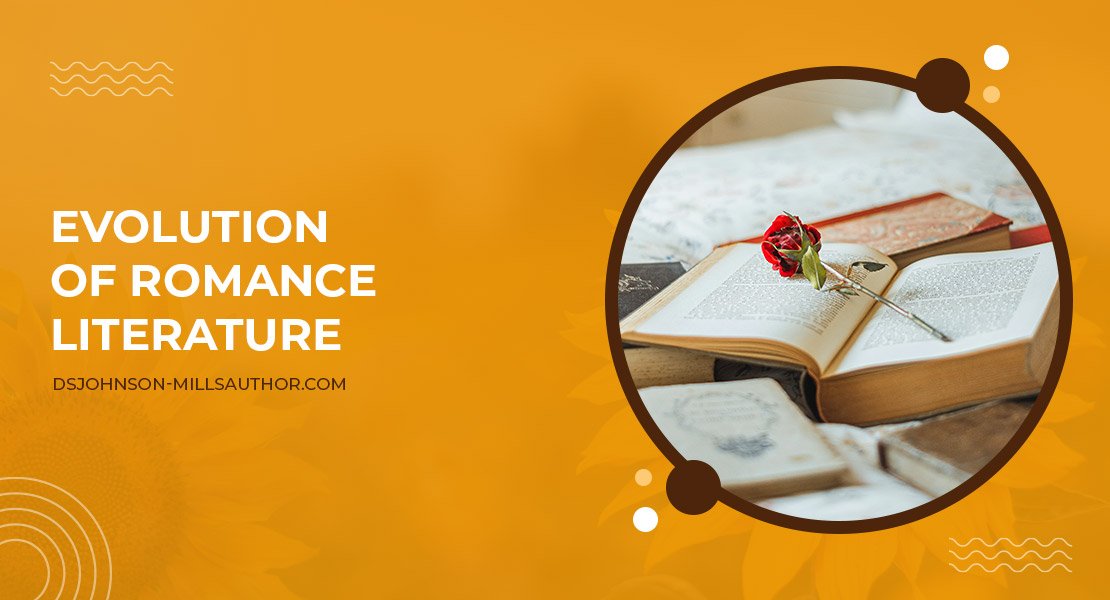Romance literature has captured the hearts of readers for centuries, evolving from classic narratives of chivalry and courtly love to the diverse and dynamic stories of modern times.
What began as poetic tales of unattainable love and heroic quests now encompasses a rich tapestry of genres reflecting contemporary themes and diverse voices.
The timeless allure of romance lies in its ability to transport readers into realms of heightened emotion, where love conquers all obstacles and the human spirit triumphs.
As society and cultural norms have shifted, so too have the tales of love that captivate our hearts, resulting in a fascinating exploration of human connection across time and space.
Let’s take a look at how romance literature has changed from classic love tales to the modern stories we cherish today.
The Roots of Romance Literature
Romance literature has a rich history that begins in the medieval era, where tales of courtly love captured imaginations. These early stories often centred around knights and noblewomen, exploring themes of chivalry and unattainable love.
Such narratives were not only entertaining but also served as moral lessons, reflecting the values and social norms of the time.
Transition Through Time
As society evolved, so did the nature of romance literature. During the Renaissance, the genre began to embrace more complex storylines.
Romance tales started to include elements of fantasy and adventure, often set in distant lands. This period saw romance becoming more intertwined with the broader cultural and artistic movements of the time, adding layers of depth and creativity to the stories.
The Rise of the Romance Novel
The 18th and 19th centuries marked a significant turning point with the rise of the novel. Romance literature began to focus more on realistic settings and character development.
The stories shifted towards personal relationships and societal issues, exploring themes like marriage, class, and gender roles. This transformation allowed romance literature to resonate more deeply with readers, reflecting their own lives and experiences.
Modern Transformations
In the 20th century, romance literature continued to evolve, branching into various sub-genres that addressed contemporary themes.
From historical romances to paranormal love stories, the genre expanded its reach, appealing to diverse audiences.
The influence of cultural shifts, such as the women’s rights movement, also became apparent, as romance novels began to feature more independent and dynamic characters.
Best Authors in History with their Classic Romance Novels
Several authors have greatly impacted the direction of romance literature. Writers like Nora Roberts and Nicholas Sparks introduced innovative storytelling that connected with modern audiences. Their work, along with others recognized by literary awards, has helped bring romance novels into the mainstream, making them a beloved part of our reading culture.
Below are some of the most popular authors in the history of romance literature:
Jane Austen
Jane Austen is a towering figure in the world of romance literature. Born in 1775, her works have become timeless classics that continue to enchant readers.
Austen’s novels, such as “Pride and Prejudice” and “Sense and Sensibility,” are renowned for their keen observations of social class and courtship.
Her ability to craft witty and engaging narratives set against the backdrop of Regency England helped define the romance novel genre.
Austen’s sharp character development and exploration of themes like love, marriage, and societal expectations have left a lasting impact on literature.
Charlotte Bronte
Charlotte Bronte, born in 1816, is another influential novelist who shaped romance literature. Her novel “Jane Eyre” is celebrated for its gothic elements and exploration of complex emotional themes.
Bronte’s work challenged the conventions of the time by presenting a strong, independent female protagonist. “Jane Eyre” addressed issues of morality, religion, and feminism, pushing the boundaries of traditional romance stories and inspiring future generations of writers.
Emily Bronte
Emily Bronte’s “Wuthering Heights,” published in 1847, is a masterpiece of romantic fiction. Known for its intense emotional depth and moody atmosphere, the novel explores themes of passion, revenge, and the supernatural.
Emily’s unique narrative style and the dark, brooding setting of the Yorkshire moors have made “Wuthering Heights” a classic that continues to captivate readers.
Her work expanded the scope of romance literature by integrating elements of tragedy and psychological complexity.
Thomas Hardy
Thomas Hardy, born in 1840, made significant contributions to romance literature through novels like “Tess of the d’Urbervilles” and “Far from the Madding Crowd.”
Hardy’s works are known for their realistic portrayals of rural life and the challenges faced by individuals in Victorian society. He often explored themes of fate, love, and social constraints, highlighting the struggles of his characters in a rapidly changing world.
Hardy’s ability to blend romance with social commentary added depth and nuance to the genre.
Current Trends in Romance Literature
The Rise of Romantasy
One of the most exciting trends in romance literature for 2024 is the rise of “romantasy,” a blend of romance and fantasy. This sub-genre gives equal importance to both romantic and fantastical elements, creating rich, immersive worlds.
Authors like Sarah J. Maas and Jennifer Armentrout have popularised this trend, and it continues to grow, captivating both adult and young adult audiences.
The success of books like “Fourth Wing” has further propelled romantasy into the limelight, with readers eagerly seeking more adventures that combine magic and love.
Resurgence of Paranormal Romance
Paranormal romance is making a strong comeback, with vampires leading the charge. This resurgence harks back to the early 2000s’ fascination with vampire tales.
As contemporary romantic comedies gained popularity, a natural shift towards paranormal themes was observed.
Books featuring witches, fae, and ghosts are also on the rise, often intertwined with comedic or horror elements. This trend showcases readers’ enduring interest in supernatural stories with a romantic twist.
Influence of Self-Publishing and Fan Fiction
The landscape of romance literature is being significantly shaped by self-publishing and fan fiction. Authors are no longer solely reliant on traditional publishing houses.
Instead, many are choosing to self-publish, which allows for quicker response to emerging trends and reader desires. This flexibility has led to a surge in creative and diverse stories, often inspired by popular fan fiction cultures.
The influence of fan fiction is evident in the popularity of tropes like enemies-to-lovers, driving a fresh wave of innovative romance narratives.
Cultural Impacts and Visual Trends
Cultural phenomena, such as the Barbie movie, have influenced visual trends in romance literature. Book covers featuring vibrant pink hues are becoming a staple in contemporary romance, capturing the fun and whimsical essence of the genre.
Sports romances are expanding beyond the popular hockey settings. With public figures like Taylor Swift and Travis Kelce in the spotlight, there’s a renewed interest in football romances.
Other sports like golf are also gaining attention, providing diverse backdrops for romantic tales.
Diverse Themes and Characters
Stories now frequently feature strong, non-traditional characters, including women in male-dominated professions and neurodivergent protagonists.
New romance books exploring blended and unconventional family dynamics are resonating with readers, offering heartwarming and relatable stories. These themes reflect an ongoing trend towards inclusivity and representation in romance, allowing readers to see themselves in the stories they love.
Conclusion
Modern trends have changed what readers expect from romance novels. The mix of classic elements with new storytelling approaches has created novels that are both nostalgic and fresh.
Reader groups and book clubs are important in this evolution, sparking discussions and recommendations that shape the future of romance literature.
Whether you’re a long-time fan or new to the genre, there’s a rich variety of stories waiting to be enjoyed. If you are unsure, here’s how to choose the romance novel.





